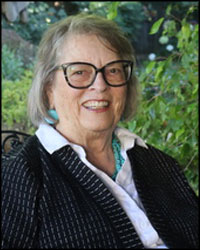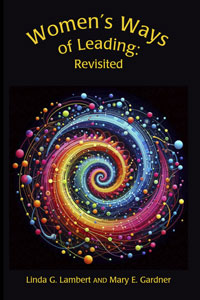Book Discussion Guide: The Cairo Codex
The story of the Virgin Mary’s diary appeared as an epiphany to Lambert when she stood in the ancient crypt in Old Cairo. Many aspects of this book were drawn from her experiences there. Book club members will enjoy conversations about The Cairo Codex, a stirring historical tale of intrigue, religion, politics and romance. These are a few suggested questions:
- Identify some of the major themes and values in the book.
- The stories take place 2000 years apart. What similarities and differences do you see between the character’s lives in the two periods?
- There are several conversations between Mary and Jesus. How would you characterize these conversations? What do you think Mary intended to teach Jesus?
- The protagonist, Justine, is well educated, but also young and inexperienced. It is Lambert’s intent to allow Justine to mature and grow up through the three books in the Justine trilogy. How would you describe Justine at this stage in her life?
- Did you expect Justine to give up her relationship with Nasser? What was it about Justine that made this inevitable?
- In what ways are setting and climate (including natural phenomena) characters in the book?
- Do you see similarities between the motivations and desires of Mary and Justine? Are these relationships credible to you?
- What qualities, both positive and not so positive, did the different women in the book reveal? Men?
- Unfortunately, conflict in the Middle East has become expected. Did this book shed any light on the causes?
- What do you think Lambert intended to convey about the religious beliefs she describes? Do you think she views Jesus as divine?
- Lambert sprinkled metaphors throughout the book. Recall a few. How helpful were they in understanding the culture?
- Many of the stories and actually conversations in this book were actually true. What can you infer about Lambert’s adventures in Egypt?
- Other observations or comments? Were you ever surprised? Offended? Affirmed? Curious? Uncertain? Pleased?
Book Discussion Guide: Women’s Ways of Leading
“We were compelled to write this book. The voices of our mothers haunted us; our more than a century of lived experience informed us; our research left open no other door. So here we are, two women whose journeys have instilled us with passion, whose values have defined us, whose evolution bound us to these questions.
The questions before us are: What are women’s ways of leading? And why does that matter?
It has been a journey of discovery.”
Women’s Ways of Leading invites the reader into a journey of self-discovery informed by a fresh definition of leadership that transcends position, role and hierarchy and proposes leadership as reciprocal learning in purposeful communities. Lambert and Gardner argue convincingly that this century needs women leaders who commit to values, are conscious of their evolving selves, invoke passion and courage, arouse the imagination, create community and mentor the next generation. Based on the findings of a series of studies examining women leaders across multiple fields of endeavors, the latest findings in brain research and psychology, and case studies from the lives of some of the world’s most remarkable women leaders, Women’s Ways of Leading sets forth provocative possibilities for a world led equally by enlightened women and men.
Whether you respond to them all or to a few, the questions and discussion topics that follow are intended to enhance your discussion.
- Why did you choose this book?
- Using Figure 1.1 on p. 3l, read through this framework and circle the boxes that are most like you at this point in your journey.
- Over the last century, women’s rights and roles have changed. How have they changed in your lifetime? (See Appendix C)
- Throughout the book, the authors provide data about women’s leadership roles. Do any of these data surprise you?
- The authors have defined leadership “as the capacity to engage in reciprocal, purposeful learning in community.” Consider the definition in your own words and discuss what it means. How does it vary from your former definition?
- Were there any stories or parts of the book that caused an epiphany to occur in your thinking? (a sudden realization or insight)
- Do you see any of your own values reflected in the stories?
- Every generation of women have struggles. What are some struggles that women of your generation face as they grow and develop?
- Sometimes women are catapulted into leadership roles because they feel “righteous indignation.” How has righteous indignation contributed to social justice and gender equity?
- The authors have included many local, regional, national, and international women’s stories in the book illustrating women’s contributions. On pages 172-176 the authors have listed “Women to Watch.” What other women would you add because you admire them? What are their characteristics that lead you to choose these women?
- If you were advising the authors on next steps in the women’s leadership movement, what would they be?
- How has this book helped you think about your own contributions?
- The authors have argued that mentoring is a crucial part of women’s leadership. What have you learned from their arguments?
- The Epilogue, “Women Who Lead Seek a Desired Destiny” represents a vision of the future regarding leadership. Are there any ideas you would challenge? Or others you would question?
Submit questions, comments, challenges to Linda and Mary on the Blog or directly to Linda at Linlambert@aol.com or Mary at Maryegardner007@comcast.net.




